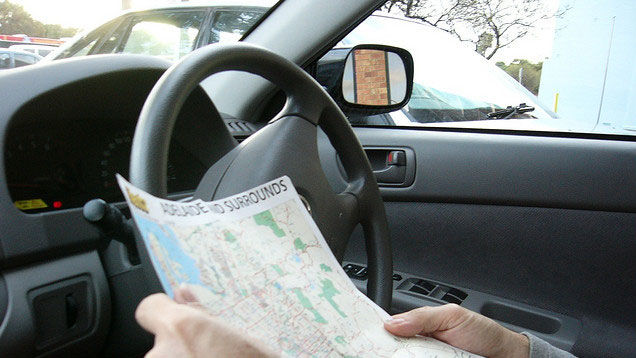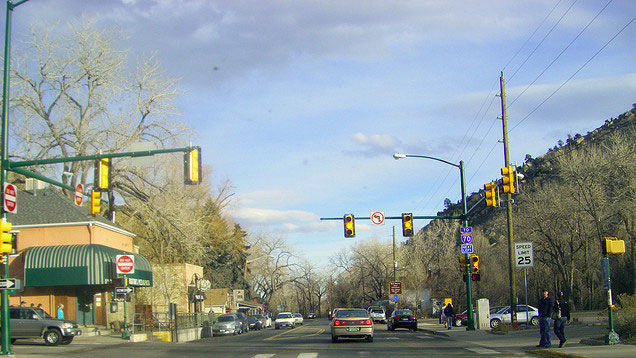Defensive driver training, or advanced driver training as it is also often referred to, is designed to increase the level of skill and safety of a driver though on-road driver training. Such training can be taken by motorists of all ages and experience levels. During a defensive driving course a driver will learn a range of techniques, which will take their driving to a higher level.
One key factor, which has grown significantly in recent years, which forms part of defensive driving is “eco-safe” driving. Which, as the name implies relates to the environmental impact of driving, and what motorists can do, to reduce their impact to the environment, by adopting an “eco-safe” driving style.

During this article we will look at four key elements covered in defensive driving courses , and how “eco-safe” driving is factored into the training.
- Observation – A key element of defensive driver training is observation. If you are not observing effectively, you can’t plan. Many road traffic collisions are caused by people not observing – not looking far enough ahead. On a defensive driving course you will learn how to observe effectively and plan your driving, so things don’t “suddenly happen” or vehicles “come out of nowhere”.
To improve observation during a defensive driving course, drivers are asked to talk through what they can see. Not just in their immediate surroundings but much further ahead. Introducing commentary driving really helps improve driver’s observation skills.
Eco Safe Impact – By effectively observing you will be doing less unplanned braking and acceleration, and as you will be observing more, you will be able to adjust your speed well in advance to any hazard, with fewer unplanned gear changes also. Late braking, harsh acceleration and excessive use of gears all increase fuel consumption.

- Anticipation – A close relation to observation in the world of defensive driving is anticipation. Anticipation is what follows effective observation. By observing to a higher level, you will be able to anticipate much more effectively.
“Looking ahead I can (observe) two people waiting at a pedestrian crossing, the lights could change any second, or they could try and dash across, so I’m going to check my mirrors, ease off the gas a little and (anticipate) having to come to a stop.”
If observation is the “data input” in driving, then anticipation is the “data processing” and it is the processing, the thinking “what if” “can they see me” “what are they about to do”, which can lower the chance of a hazard turning into a collision.
Eco Safe Impact – Like with improved observation, by anticipating more effectively you will be driving in a way, which involves less unplanned braking and acceleration, and potentially fewer gear changes.
- Speed Awareness – With modern vehicles, it is all too easy to exceed the speed limit. During a defensive driving course, you will become more aware of speed and its potential implications. Effective observation and anticipation not only cover what is going on outside the vehicle, but also inside – including the speed you are traveling at. Excessive, or maybe more accurately, inappropriate speed, is the cause of many road traffic collisions and can lead to serious injuries for you, your passengers, or the occupants of another car. If the accident was not your fault, you may even have to file a claim with the help of a St. Petersburg car crash lawyer (or a similar attorney in your area) to win compensation to cover your medical costs and or any lost wages. As such, effective observation and anticipation are critical whenever you are behind the wheel in a car.
Eco Safe Impact – By lowering your speed you will be using less fuel. This is especially so at high speeds. The faster you go, the “thicker” the air becomes. At 55mph a car is usually around its most efficient. But as the speed increases engine efficiency reduces, causing the vehicle to use more fuel.
3% less efficient at 60mph
8% less efficient at 65mph
17% less efficient at 70mph
23% less efficient at 75mph
28% less efficient at 80mph
Following a defensive driving course, drivers can reduce their fuel costs by up to 20%. This figure is nearer 30% for van drivers. During defensive van driver training, a significant focus is placed on eco safe driving techniques, and especially speed control. Vans can be a great deal less economical than cars, especially when they are carrying a load. With many of them covering large distances, employers are keen to drive down costs, which is one of the reasons why a large proportion of defensive driving courses are for van drivers.
- Positive Attitude – Drivers that display a positive attitude towards driving tend to have a lower accident claim rate and fewer points on their licence. During a defensive driving course a tutor will work with the driver to improve their general attitude towards all aspects of driving.
A positive attitude can be towards driving in general, towards other road users, towards the rules of the roads, and also towards their own driving. By empowering a driver with the skills to become a safer, more skilful driver then a positive improvement in attitude usually follows. Unlike other elements, a positive attitude is not something that can be taught, but encouraged and developed, and is usually a result of effective learning.
Eco Safe Impact – A positive attitude towards driving will make it much more likely for the driver to observe speed limits, be aware of the impact speed has on fuel economy, and to driving in a defensive way demonstrating effective observation and anticipation. All of which, when combined will make a more environmentally friendly, safer driver.
Conclusion – A defensive driving course covers a wide range of elements, and no too courses are the same. This is because each driver is different, with different driving styles, experiences, skills, objectives, issues, phobias, worries, frustrations and so on. The key success factor, which each defensive driving course should be judged by, is to what degree the driver feels their driving has improved at the end of the training.
From a corporate perspective, the accident claim rate, corresponding insurance renewal costs, fleet fuel costs and morale among drivers, are critical success factors when measuring ROI. Whatever your reason for investing in defensive driver training, whether it be for a personal reason, or as part of a corporate initiative, there are significant benefits to be achieved. Plus the fact a course can be fun and enjoyable too!





Leave a Comment